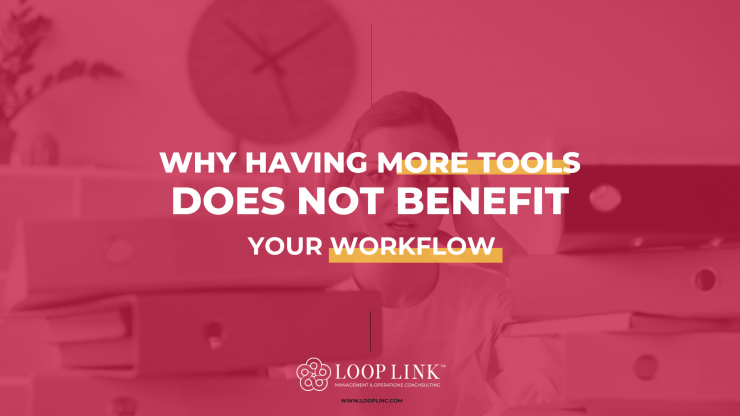Having more tools does not necessarily benefit your business workflow. The amount of information available at your fingertip is limitless -DIY templates, checklists, systems, and tools. Then there are CRM’s, Productivity tools, Project Management platforms, Calendar management systems, and much more. The vast choice of tools began to surface because no two people are the same. We all learn, adapt, and operate differently, therefore the webiverse provides countless options.
I love learning about different business systems and doing so has given me a vast amount of knowledge that I’m able to pass on to those around me. I love market research, and understanding how each tool could benefit a business, to what degree, and at what stage. When I began my own business, I opted to implement many of the free tools available, and at one point I was running 22 different types of tools to operate my business. Slowly I began to see a mismanagement of my data – duplication, and redundancy popping up all over! I couldn’t keep the tools separate and apart from any longer. Suddenly, I was in the Danger Zone.

The Danger Of Too Many Tools
Just because a tool looks pretty, and acts pretty, does not mean it’s pretty good for your business. Often we fall into the shiny object trap and think that there is a place for the tool because, for a moment, it spoke to something that you felt was amiss in your business workflow.
This is the Danger Zone!
Using too many tools does not benefit your business workflow. The obstacle that many deny or avoid facing is that whenever you add a new tool, you need to integrate it with your existing business workflow or modify your business workflow to accommodate the new tool. This means adjusting your processes, a step often missed.
Having too many tools can give you results you weren’t expecting and may not be a fan of.
- Time Spent on Navigation
- You’re finding it’s harder to keep up with learning the tool.
- You’re not maximizing its features.
- It’s taking you more time to switch from one tool to the next.
- It’s not a seamless handoff from one to the other.
- Self-produced Redundancy
- You have similar tools in functionality and purpose (i.e. Trello and Asana).
- Integration tools (such as Zapier) only help add the same data to two different tools (ie. Trello and Asana).
- Finding the newest version of your information may become a challenge.
- Too many places to upkeep
- You have stored the same data in multiple places.
- When you’ve updated one, you may not have updated the others.
- You forget that you had access to that tool.
Less is More with Business Workflows
You have heard the term “less is more”. In the case of business tools, this stands to prosper greatly. When you have consolidated as many tasks into one centralized tool, you maximize the utilization of that tool. Not only will you see greater, stronger, and lasting success, but also:
- Return on TIME not spent navigating and searching for information.
- Return on PROFITS when you can execute and close projects with quickness and ease.
- Return on LIFE when the system automates and streamlines the workflow for you.
A consolidated tool that can meet 80% of your needs is the system that you should look for. This should include the areas of:
- The Follow-Up System (Client and lead tracking).
- The Selling System (Your payment processing and purchase management).
- The Finance System (Your profits and expenses).
When you accept a tool, it’s important to understand its functionality, and know that it will meet your business’ needs. If it doesn’t, what needs to change in your business process and workflow? Use a simple checklist to evaluate whether a tool will be useful in your business, or if there will need to be some adjustments along the way.
Avoid going down the customization of the tool path! It is a deep rabbit hole that will not yield the satisfaction that you seek. Instead, you will find contempt that it is still a bugger who doesn’t meet your business needs after you spend more dollars than you wanted to on it.
If you do decide to go with a customized tool, work out your numbers to evaluate your ROI on it. If you are a small business and in a unique industry, perhaps this is the best path forward. However, explore all the current options before you do decide to go custom.
Your Move: Strengthen Your Business Workflows
I KNOW you have enjoyed some of the tools of the trade in your business. How have you benefited from your systems?
Come over to our Free Exclusive Community where you can find support from other CEOs on the same journey.





